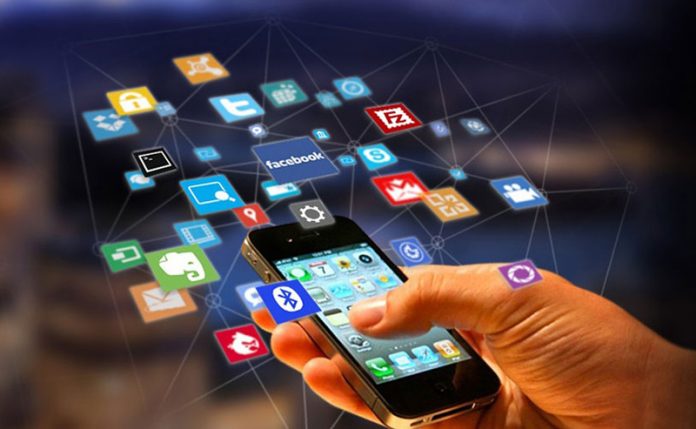By Shaun Williams
Human lives have become more luxurious, convenient, and joyous with the invention of mobile app technology. Mobile app popularity has grown over the years, and with the arrival of smartphones, they have become an essential tool for human survival, especially when it comes to GenZ and millennials. This has led to heavy investments in mobile app development by various industries to reap the benefits of the rapidly evolving mobile app market. According to Statista, as of 2021, Google Play Store has the highest number of apps, 3.48 Million, followed by the Apple App Store containing 2.22 Million, Windows Store with 669k, and Amazon app store with 460k mobile apps. Gaming, entertainment, e-commerce, tourism, finance, and education are some of the industries that have heavily invested in mobile apps to make their services more accessible and convenient.
Today, in order to stand out amongst millions of apps already present on various app stores, a mobile app must be unique and easy to use. With the increase in mobile app development, the competition for developers and startups has become more challenging, considering the quality and performance of the mobile app. As a result, startups and industries are focusing on integrating breakthrough technologies like IoT, AR & VR, AI, etc., in mobile apps to make them more powerful, helpful, efficient, and convenient to use. In this post, we’ll be looking at some of the powerful technology integrations in mobile app development that have helped improve user experience. So, let’s move forward and learn more about these technology integrations in mobile apps and how they influence user experience.
1. IoT in mobile apps
IoT stands for “internet of things” and has emerged as a ground-breaking technology. It refers to a network of devices connected to the internet that collect and share information to and from other devices. This becomes possible due to the sensors and softwares embedded in these devices that help them manage and share information with the help of the internet. IoT technology integration in mobile apps is a great concept that aims to make it easier for smartphone users to control devices from any place. Furthermore, IoT makes objects smart, i.e., enables them to communicate and follow commands.
IoT empowers smartphones via mobile apps to command smart devices like smart bulbs, smart refrigerators, smart doors, security cameras, thermostats, etc. With the help of IoT integrated mobile apps, smart appliances can be controlled from anywhere, irrespective of the place, whether in-home or out. For example, a user can control the house’s temperature and adjust it before entering it to feel more comfortable via the mobile app. One can ensure that their smart home is locked correctly by checking the smart door locks using the relevant mobile app and can command them to lock if not already done. This way, IoT integration in mobile apps has improved user experience by making lives more comfortable, manageable, and convenient.
2. AI in mobile apps
AI, aka artificial intelligence, is yet another promising technology whose integration in mobile app development has made apps more efficient and secure. AI is a technology that empowers machines with human-like intelligence and makes them exhibit human traits such as planning, learning, problem-solving, reasoning, creativity, and much more. The best example of artificial intelligence in mobile apps is the chatbots and voice assistants, which you can find in almost all apps, especially e-commerce, fintech, and business-related apps.
AI integration in mobile apps has made the shopping experience through e-commerce apps more convenient. AI helps these apps analyze the app users’ shopping traits by looking at their past purchase histories and recent search patterns. By analyzing this data, AI helps predict the right product suggestions and reasonable offers that need to be given to the users to lure them into buying products. The other best perk of AI in mobile apps is enhanced security steps; AI enables apps to carry out voice recognition, image recognition, and other AI-powered features that make authentication more trustworthy and secure.
3. AR in mobile apps
Augmented reality, aka AR, is a rapidly evolving and powerful technology that aims to transform the user experience entirely and in better ways. AR technology provides an interactive 3D viewing experience by adding computer-generated elements and information such as text and images to the real world or live view of surroundings. Mobile apps powered by this technology enable users to improve or alter their view with computer-generated graphics they like with the help of a smartphone or tablet camera.
AR technology has found a very constructive use in improving the user experience for gaming, fashion retail, and home designing shopping apps. Pokemon Go is one of the most suitable examples of AR in mobile apps. Ikea Place and Sephora are two widely used home furnishing and fashion shopping apps that use augmented reality to allow online shoppers to feel and see how a particular item will look on them or in their house. These features in a shopping app have genuinely helped buyers find the right product and sellers to increase their sales.
4. VR in mobile apps
Virtual reality is also an up-and-coming technology that aims to enhance the viewing experience but works on a slightly different concept than AR. VR puts a user into a completely computer-simulated virtual environment which can be similar or different from the actual surroundings. For a VR experience, users need to wear VR headsets connected to consoles or software that enables virtual experience. The scene where a user is placed virtually can be a real place or an artificial environment like in games. Entertainment and tourism apps are the two genres that are highly investing in VR-powered mobile apps to provide users with a real-world-like and a memorable user experience. Netflix VR is one such modification of a simple Netflix app that powered with VR allows users to experience the scenes they’re watching as if they are a part of it. Many museums are also offering VR-powered mobile apps that allow the users a virtual tour into their museums to make them feel like they are visiting it in-person.
5. Wearable technology and mobile apps
Wearables have become a trendy fashion and fitness accessory these days. Wearables like smartwatches, fitness trackers, Google Glass(eyegear), smart clothing, GPS shoes, and chest straps are very popular in the market. Wearable technology is helping its users in staying healthy by constantly notifying them on the status of their body vitals such as pulse rate, blood pressure, steps and distance walked, hours of sleep, etc. Additionally, wearables like smartwatches have become a popular fashion accessory that can match any style of clothing.
Smartwatches help users in multiple ways, such as locating mobile phones, making and answering phone calls without even needing a smartphone, sending messages, and monitoring their health parameters. But all of these wearables need an interface to connect with the smartphone in order to notify users, and mobile apps bridge that gap. Mobile app development for wearables is a new trend nowadays as mobile apps are much needed for wearables to provide a better user experience. All the data about the body or other things collected by wearables can be accessed in more detail through mobile apps.
Wrapping up
Mobile apps are a rapidly evolving technology aiming to provide ways of making human lives easier and better. Today every task, small or big, can be done through mobile apps, be it learning, shopping, teaching, banking, doing office work, or connecting with the world. Mobile apps are becoming better day by day, and with their integration with the up-and-coming breakthrough technologies, they are playing a significant role in improving the user experience. In this post, we mentioned some of the most promising technologies and their integration with mobile apps that have entirely revolutionized the user experience. From virtually experiencing the destination you’re willing to visit monitoring body vitals on the go, these technology integrations have made human lives more fun and active. More research is being done to derive the most out of these technology integrations in mobile apps to make the user experience much better and memorable.
About the Author
I am Shaun Williams, a content writer with Goodfirms,10 a research platform for Cloud Computing, Ecommerce companies, Translation services companies, among many others. I enjoy communicating ideas and knowledge creatively and also ensure that the readers never suffer from boredom while reading my posts.



































